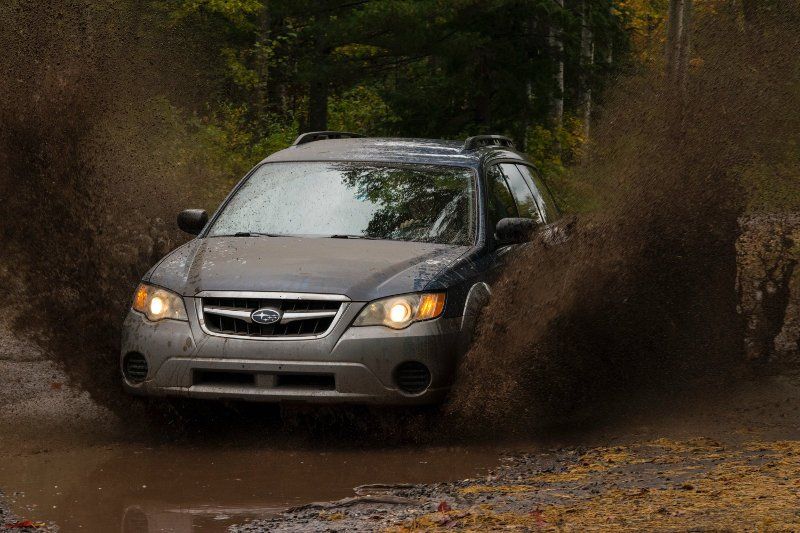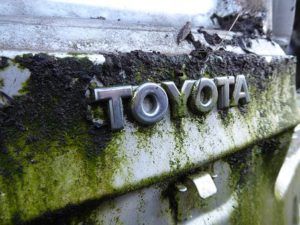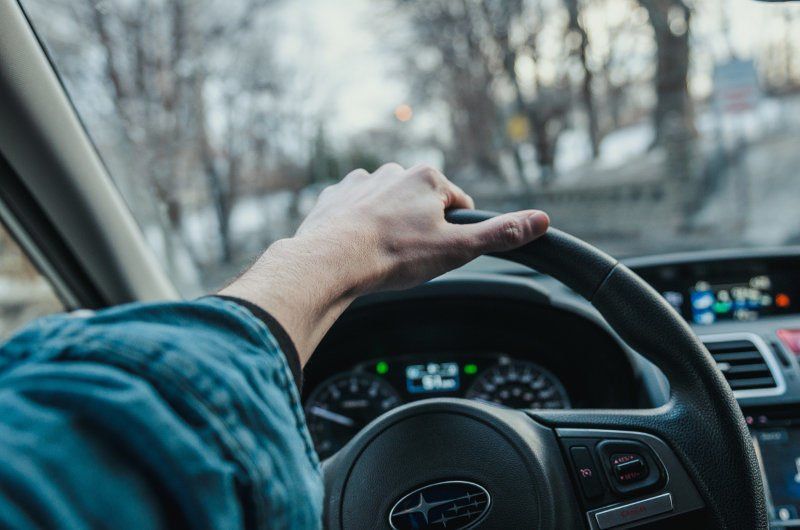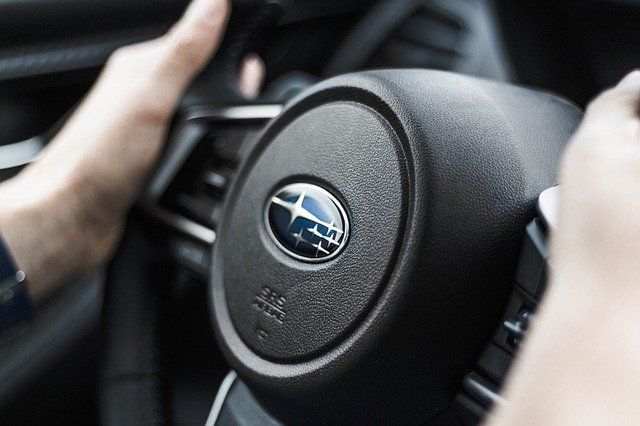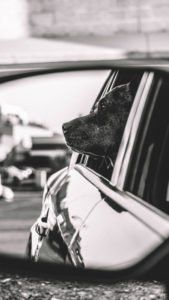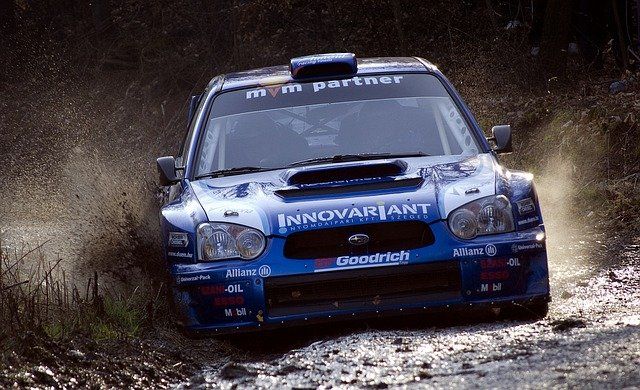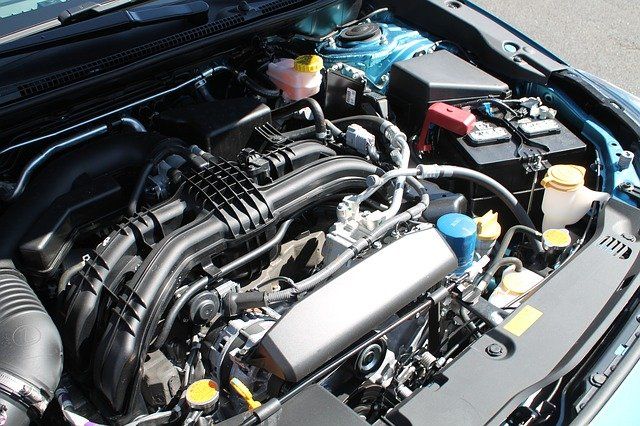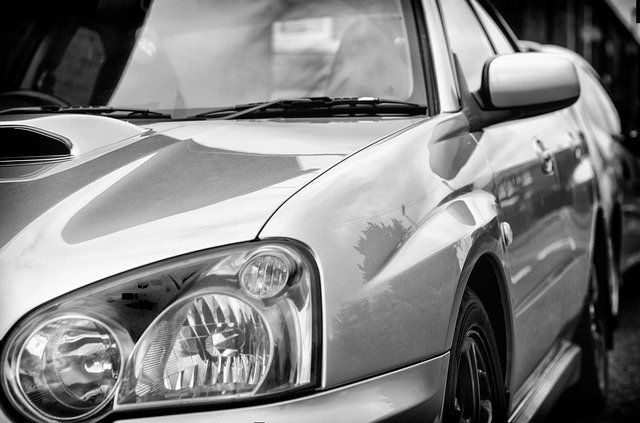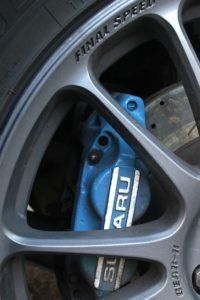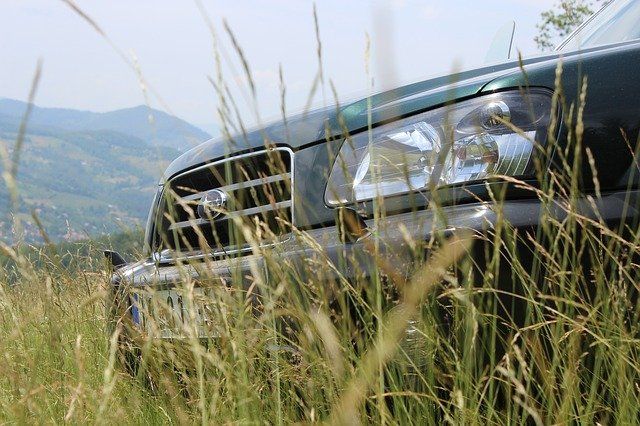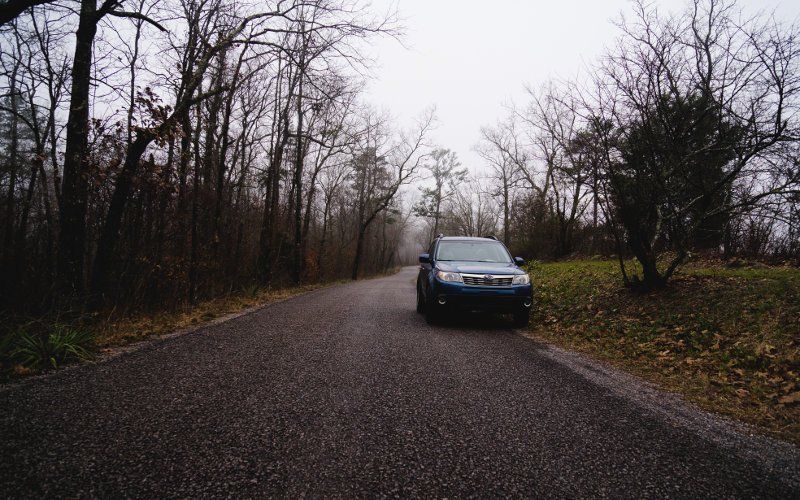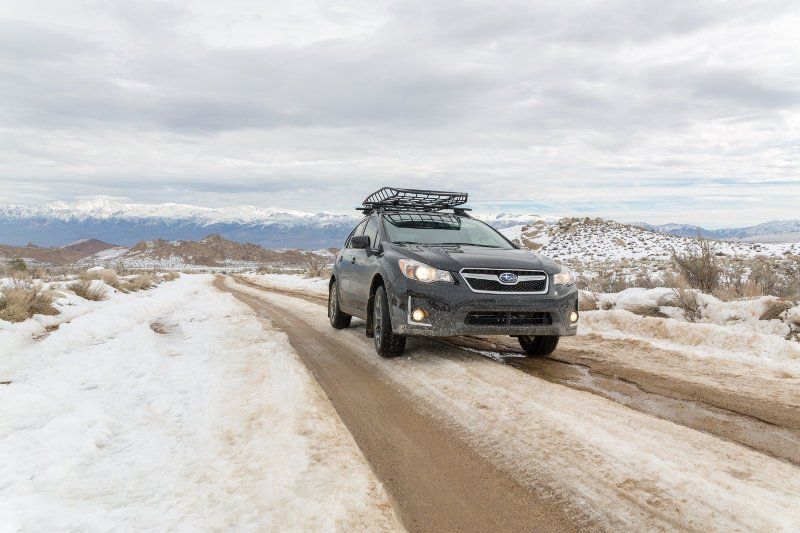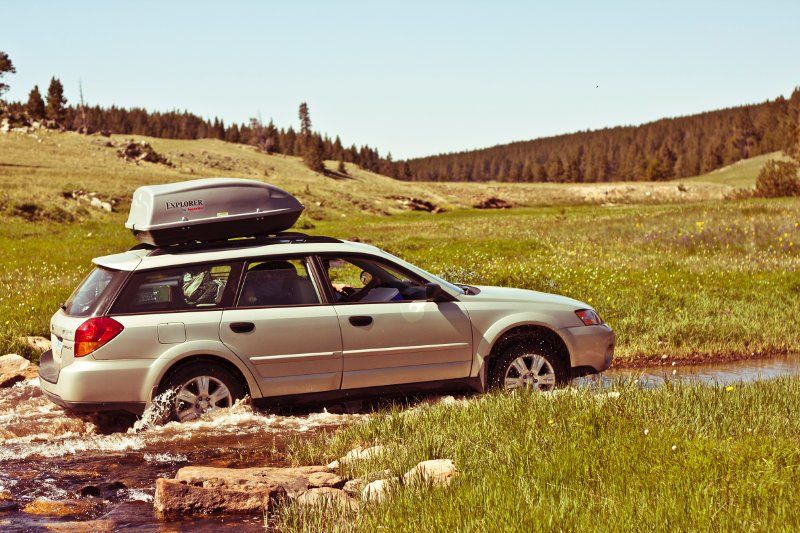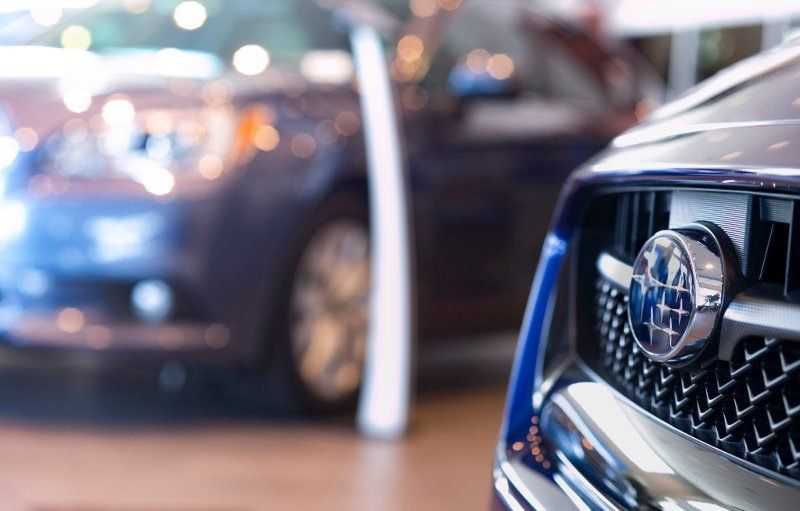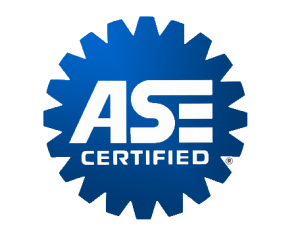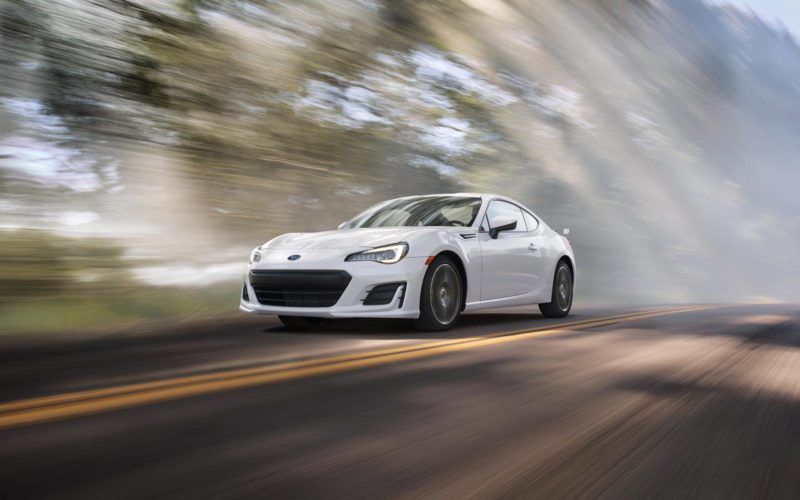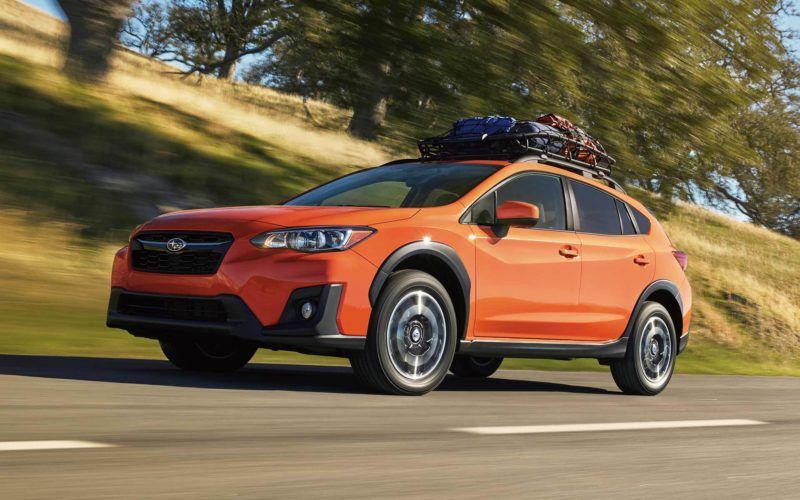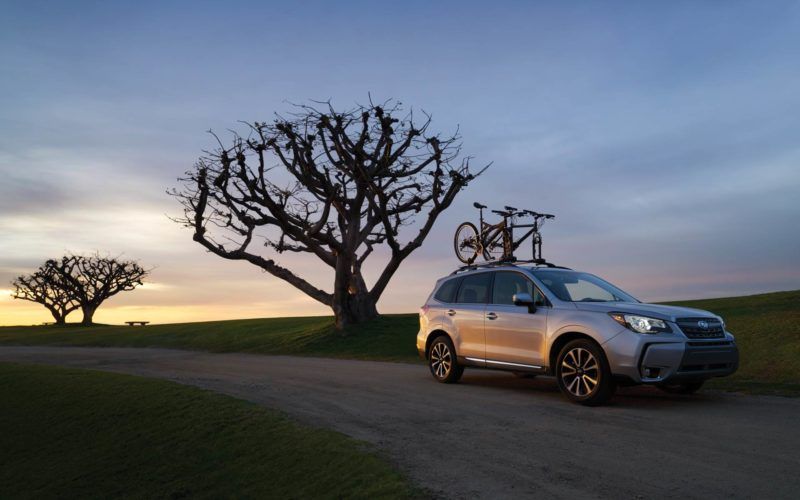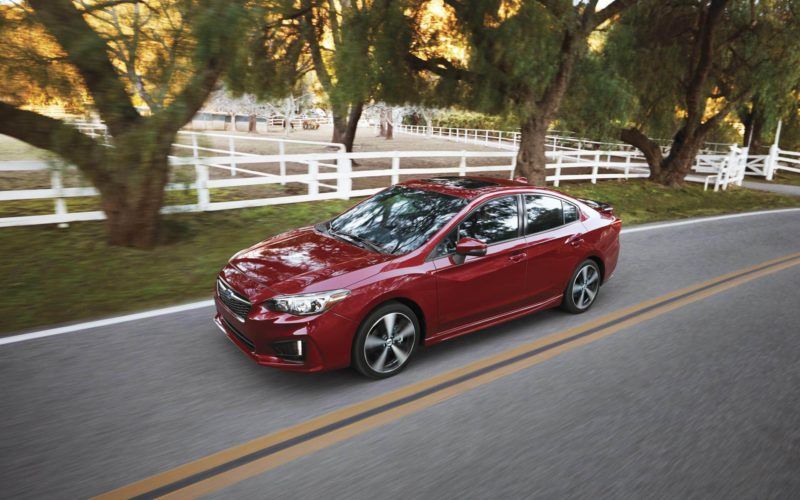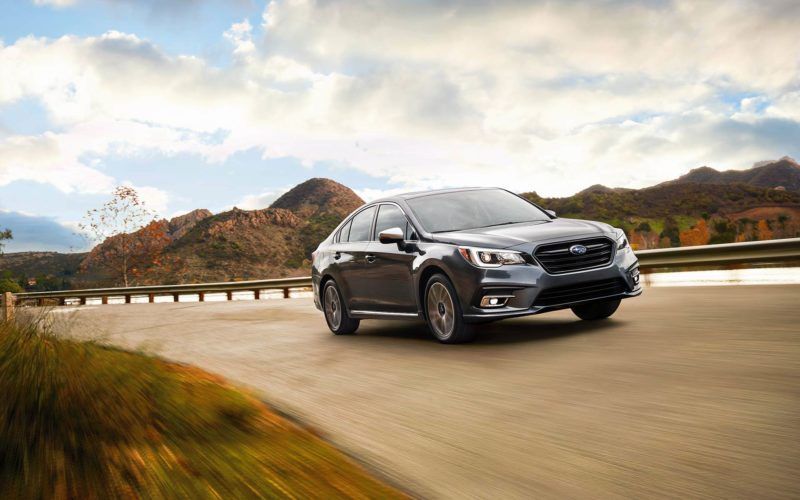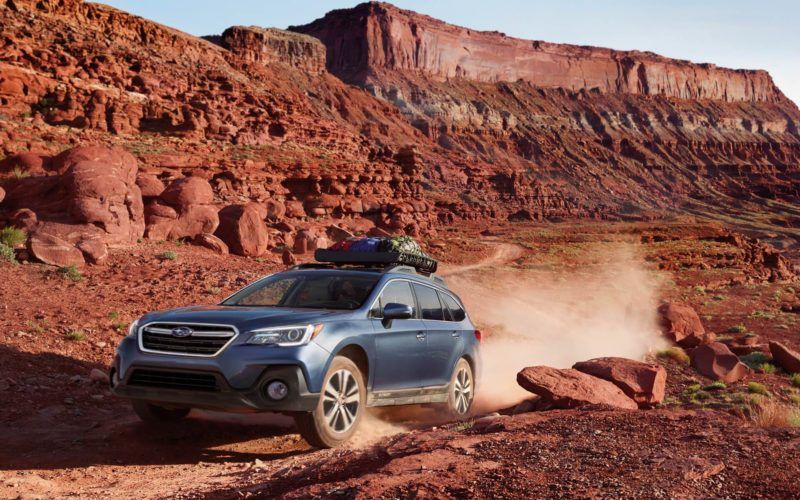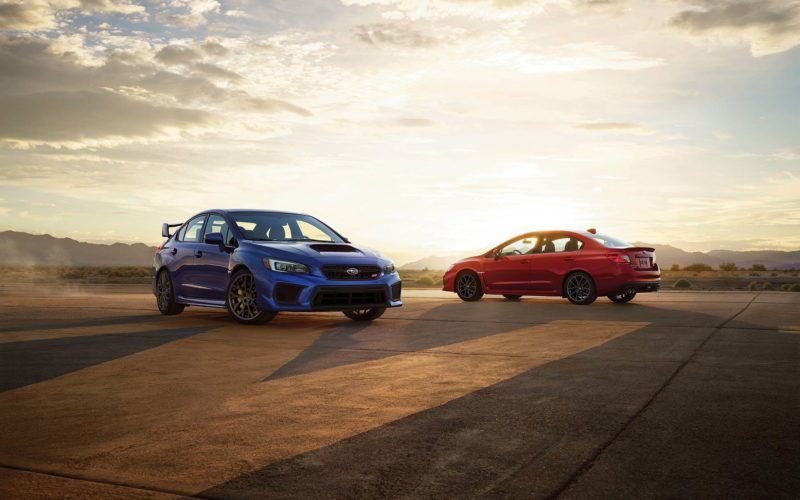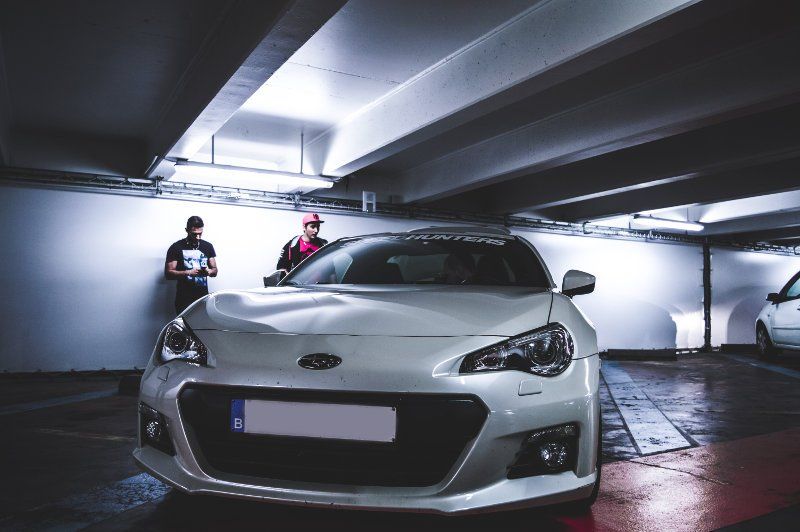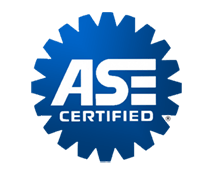ULTIMATE SUBARU GUIDE: BUYING, MAINTAINING, REPAIRING, AND SELLING YOUR SUBIE
We love when customers bring their Subarus into the shop. And we’re lucky—as an auto shop in North Boulder (the Subaru capitol of the country), we get to work on more Subies than most garages.
As mechanics with over 30 years combined experience working on Subarus, we’ve built a huge store of information about the brand, from choosing the right model to repairing, upgrading, and even selling your Subaru.
PAGE NAVIGATION:
Find the Right Toyota Mechanic
Common Toyota Issues
Common Toyota Repairs
Seasonal Repairs
Toyota Upgrades
Buying a Toyota
Types of Toyotas
Selling your Toyota
Benefits of Driving a Toyota
Let’s start out with a look at what every Toyota owner needs: a knowledgeable and reliable mechanic.
BENEFITS OF A SUBARU
Subaru owners—and Coloradans in particular—are known for their “near-fanatical loyalty” to the brand, and for good reason.
HANDLING
It’s not surprising that you’ll find so many Subarus driving through the mountainous terrain of Denver, Boulder, and surrounding areas. In fact, you’ve probably heard the joke that Subaru ownership is a requirement to become a “real Coloradan.”
If you favor weekend adventures to Colorado’s plentiful mountains, lakes, canyons, rivers, and other natural sites, or if you’re looking for a car that can handle snow and ice, Subaru models are a reliable choice.
In the summer, you’ll see Subarus toting bikes and camping gear up and down the mountains. In the wintertime, you likely notice Subies, especially the Subaru Outback, loaded up with skis and other outdoor adventure gear.
Subaru is famous for equipping almost all of its models with symmetrical all-wheel drive (not including the BRZ), a feature that allows for safe handling even in the worst weather.
Other cars generally offer front-wheel drive, which means you only have control over the two front wheels. Not great when your car is stuck in the snow or navigating rocky mountain roads! And, rear-wheel drive cars can have an especially hard time in slippery conditions.
Many Subaru models also include Active Torque Vectoring to further improve handling and keep you on your intended path, even in tough conditions.
Every Subaru model is powered by the Subaru Boxer Engine. According to Subaru Global, the engine “is renowned for its superior balance, smoothness, and power delivery — and has been for 50 years now. This horizontally opposed design boasts a low center of gravity that helps create more balanced handling, flatter cornering, and greater stability on every type of road.”
In other words, the unique, innovative engine is made to respond to drivers, allowing for smooth, clean handling.
DRIVING
From zippy sports cars to reliable sedans to endlessly adaptable mini- and compact-SUVs, Subies of all shapes and sizes are easy to drive. More practical than “fun,” most models offer a comfortable, smooth ride in a spacious interior.
Subaru sedans and SUVs are not particularly renowned for their acceleration, but you can count on the engine to get the job done. And while you may find a stiffer ride in the sportier models (like the BRZ or the MRX), many drivers are happy to make the exchange for impressive acceleration and extra speed and agility.
Subaru also offers adaptive cruise control and these important brake features:
- Anti-Lock Brake System: prevents wheels from locking up
- Electronic Brake-force Distribution: measures how weight is distributed across the car to determine the safest way to stop the front and back wheels
- Brake Assist system: allows for a quick emergency stop
SAFETY
In addition to the brake features listed above, Subaru offers a Suba-slew of features to protect drivers and ensure maximum road safety.
- STARLINK Safety and Security Services
- Automatic Collision Notification: once your airbags deploy, a first responder will be sent your way, and you will be connected with a STARLINK Customer Care Advisor
- Emergency SOS and Roadside Assistance
- Stolen Vehicle Recovery
- Maintenance Notifications
- Rear Vehicle Detection
- Blind-Sport Detection and Lane Change Assist: systems warn you if a vehicle is in your blind spot or the lane you wish to change into
- Rear Cross-Traffic Alert: warns you of vehicles approaching while you are backing up
- Rear-Vision Cameras: allow for a full view of the area behind your vehicle, more than you can see turning your head or using mirrors alone
- Protective Systems
- Sturdy frame engineered to withstand high impact
- Up to eight airbags
- Rollover sensor
- Low engine placement, so it passes under passengers in the event of a front-end collision
- Vehicle Dynamics Control System
- Active Torque Vectoring senses steering and braking to keep you headed in your intended direction
- Traction control
- Eyesight System
- Adaptive cruise control
- Warnings when you start to leave your lane
- Pre-collision braking
With these safety features (and more), it’s no wonder that Subarus equipped with the Eyesight system receive the highest possible front crash prevention rating from the Insurance Institute for Highway Safety (IIHS). In fact, Subaru earned Top Safety Picks for their entire lineup from 2010-2016 and Kelley Blue Book’s “Most Trusted Brand” award in 2017, cementing the brand’s place as one of the best in the world.
VALUE
According to Cars Direct, “On average, a new vehicle depreciates 19 percent in the first year, half of which occurs immediately after you take possession…You can expect a 15 percent drop in the second and third years.” That’s a total of 49 percent! But, the Subaru Impreza only drops 45 percent in the first three years. That’s a 10 percent swing (thousands of dollars) in favor of your bank account!
ALL-PURPOSE ADAPTABILITY
Thanks to their all-wheel drive and spacious interiors, most Subaru models are ideal for handling any weather condition, whether that’s rain, sleet, snow, or ice.
You can also easily add a luggage, bike, or ski rack to the top of your Subaru, making it simple to get anywhere you want to go, especially in the great outdoors.
And, although Subies are perfect for wintery, mountainous climates, they are also compact enough to fit comfortably in city lanes and parking lots. When you’re not using the extra space for a camping trip, you’ll have plenty of room for grocery shopping, daytime excursions with the whole family, and outings with the dog.
SUBARU MAINTENANCE & REPAIR
Regular maintenance and repairs not only keep your Subaru on the road, but they can put thousands of dollars back in your pocket when you decide to sell. Here are a few pointers to help you get the most out of your vehicle, from mile 1 to mile 100,000 (and beyond).
RECOMMENDED REGULAR SUBARU MAINTENANCE
OIL
The official Subaru website tells drivers that “engine and oil technologies now allow for up to six month or 6,000-mile maintenance intervals.” In our professional experience, you should still stick to oil changes every 3,000 miles – especially with Subarus. The engine cylinders are sideways in Subaru engines, so they’re burning oil straight off the lot. The last thing you want is to burn through your oil and mess up your brand new engine.
Keep in mind that 3,000 miles is a benchmark, not a hard line you need to reach before getting an oil change. It’s important to pay attention to how you’re driving, and whether or not that might be burning more oil faster. While this might not necessitate a complete oil change any more often than 3,000 miles or so, you might have to add more oil to your car if you’re driving requires:
- Frequent braking
- Frequent driving on highways or hills
- Regular stop-and-go freeway traffic or otherwise frequent accelerating and decelerating
- Driving in extreme heat or cold
- Frequently idling
You can also expect to burn more oil during the standard new-engine break-in period, or the first 3,000 miles.
Take a moment to find out what kind of oil is appropriate for your Subaru. Some Subarus take conventional oil, while others take only synthetic. Synthetic oil can reduce engine wear and save you money over the long-term.
In many cases, you can use synthetic oil in place of conventional, as long as it meets the same viscosity. However, you cannot use conventional oil in models that require synthetic oil. You should check the recommendations for your particular Subaru before adding any oil to your car.
FLUIDS
In addition to checking and changing your oil, you should also get in the habit of checking:
- Coolant
- Transmission fluids (once a month!)
- Brake fluids (once a month!)
- Windshield wiper fluid
If any of the levels are low, check your vehicle’s maintenance guide to see how to fill them and with fluid is best for your model.
Note: If you have to refill transmission or brake fluids more than once every 20,000-30,000 miles (or every other year), it may be a sign that your car needs service.
TIRES
If you end up having to replace a tire, make sure you actually replace all four. Because most Subaru’s operate with a 4-wheel drive system, all of the tires need to spin at the same speed, which means they need to have the same tread.
ENGINE
Timing Belts: On some cars you can just call for a tow and schedule a repair if your timing belt breaks. Subarus use interference engines, and if the timing belt breaks it can destroy the engine. If you’re approaching the end of your timing belt’s life span (typically about 100,000 miles), make sure to schedule a repair with a trusted Subaru mechanic. A small repair now can save thousands of dollars rebuilding your engine or buying a new car.
Head Gasket:
As many long-time owners know, Subarus are prone to blowing a head gasket around 120,000-160,000 miles. The head gaskets found on new Subarus still aren’t as strong as the multi-layered steel gaskets shops like ours use when making repairs. A blown head gasket can cause thousands of dollars in repairs. Instead of getting caught off guard with a costly repair, ask your mechanic about when you should replace the head gaskets.
Cold Weather Engine Care:
Experts are torn on whether it’s better to let your engine warm up or if you should just start driving in cold weather. If you do choose to warm up your engine, you shouldn’t need any more than 30-60 seconds. And, whether or not you let your engine get warm before driving in the cold, experts agree you shouldn’t push your car too hard in the first 5-10 minutes of cold-weather driving.
BATTERY
Subaru batteries are intended to be maintenance-free. But, if you notice that the electric features in your car seem slow, or if you simply have a lot of miles on your car, it can be useful to have your battery checked. It may need basic cleaning, tightening, or cable replacement. And, a simple fix can get your Subaru back to peak performance.
AIR FILTERS
“Genuine Subaru cabin air filters provide a crucial line of defense against airborne contaminants, trapping them before they enter your Subaru HVAC system or the lungs of anyone in the vehicle. You may notice restricted air flow when it’s time to get changed.” (Official Subaru Website)
If your car feels stuffy, or there’s a smell you can’t quite identify, it’s a good idea to get your air filter changed. Changing filters can also improve fuel economy, performance, and acceleration!
You can replace air filters on newer vehicles every 12,000 miles. Vehicles from 2014 or older should have the filters replaced every 7,500 miles.
GASOLINE
Make sure you’re using the grade of gasoline that’s recommended for your vehicle, and that you’re not letting the gas tank run on empty. Keeping your Subaru properly fueled will keep your engine healthy and your car running smoothly—not to mention improve gas mileage!
LIGHTS AND WIPERS
Your headlights, rear lights, brake lights, and windshield wipers are essential for visibility and safety. It’s always a good idea to check your lights and turn signals before a long nighttime drive (and at least once a month).
And, don’t wait for a rain or snowstorm to discover that your windshield wipers don’t work or you’re out of washer fluid.
BRAKES
FINDING THE RIGHT SUBARU REPAIR MECHANIC
While you may want to perform as much maintenance as possible yourself, some Subaru auto repair and maintenance requires a skilled professional. And, if you find yourself in an accident or you need emergency repairs on your car, it’s always a good idea to know which mechanic you can trust to get you back on the road at a reasonable price.
Every make and model carries its own eccentricities, and you’ll want to find a mechanic with specialized experience working on Subarus and their unique parts and needs. Ideally, you want a shop that can provide excellent service without breaking the bank. As such, should look for these key factors:
- Automotive Service Excellence (ASE) certified mechanics
- Extensive experience with Subaru repair
- Up-to-date information about Subaru recalls, diagnostics, repairs, parts, and models
- Comprehensive understanding of overall auto maintenance and repair
- Uses official Subaru parts (including recycled parts)
- Honors your Subaru extended warranty
- Commitment to high-quality service
- Reliable, trustworthy mechanics
- Offers emergency repairs
YEAR-ROUND RIDES: WINTERIZING (AND SUMMERIZING) YOUR SUBIE
In addition to routine maintenance, there are a few seasonal steps you should take to ensure your Subaru stays safe, comfortable, and in good condition.
SPRING
A tough winter can put your reliable ride through a lot! Once the ice melts, it’s time to prepare for spring showers and unpredictable temperatures.
- Check windshield wipers, especially if you know they’ve been stuck under a layer of sleet and snow at one point or another.
- Check tires. Remember, cold weather often lowers tire pressure, and ice and salt can damage treads!
- If you or your passengers steam up the car windows after a long hike or yoga practice, look into foggers.
- Watch out for mud splatter and other buildup, especially on lights and windows.
SUMMER
Summer months are not only hot, but they can bring intermittent thunderstorms. Make sure your Subie can handle the heat and adverse weather.
- Check air conditioning.
- Add tint or sun strips to keep the car cooler.
- The first rain after a dry spell makes roads especially slippery. Make sure tire treads are in good condition in case of sudden summer showers.
- Give your car an overall check-up before and after any long road trips.
- Stay aware of dust and bug buildup, especially on lights and windows.
- Consider driving gloves for hot steering wheels.
- Heat can lead to unexpected tire blowouts. Consider keeping a patch kit and spare tire in your car—and make sure your spare isn’t flat!
- Keep an emergency kit in your car, especially if you’re taking long trips through extreme temperatures or desert landscapes. You might want water bottles, nonperishable foods, fans, window shades, sunblock, emergency cell phone chargers, or other protective items, just in case you find yourself on the side of the road with no working air conditioner and no help nearby.
FALL
Rain, leaves, and the potential for an early snowstorm make Fall the ideal season to start preparing your Subaru for the upcoming winter.
- Check your wipers to see if they need replacing.
- Test your defroster.
- Make sure the heat works—it’s been off all summer, and nobody likes a long, frozen drive to work.
- Check your tire tread and air pressure.
- If you’ve been on a few road trips or driven a lot over the summer, make sure you check your mileage and fluid levels, and get your car maintained accordingly.
WINTER
Colorado winters are no joke: steep slopes, icy roads, and heavy traffic can make the most seasons drivers stay home. While Subarus are built to withstand tough conditions, you can take some precautionary steps to add another layer of protection for yourself and your car.
Even if you’re not planning on heading to the mountains, remember that roads can quickly become slippery, slushy and thick with salt and sleet! We recommend the following steps to winterize your ride (even if you just did a few months earlier in the Fall).
- Make sure your heat works.
- Check your defroster.
- Check the condition of your wipers, and remember to raise them before expected snowfall so they don’t stick or crack.
- Check your windshield wiper fluid levels (for when salt gets kicked up onto your windshield). WARNING! Be careful about spraying fluid on your windshield in freezing temperatures! If it’s cold enough, the washer fluid could freeze on your windshield, obscuring your view and increasing the chances of an accident.
- Keep an ice scraper in your glove box.
- Consider driving gloves for cold steering wheels.
- Check whether or not weather and road conditions necessitate tire chains or a different route.
- Keep emergency supplies—such as hand warmers, emergency blankets, flashlights, packaged nonperishable foods, water bottles, emergency cell phone charges, and extra clothes—in your car. Subarus are great, but you never know when a storm or slippery road could leave you stranded, or even without a working battery! There’s plenty of room for an emergency kit.
SUBARU UPGRADES
Whether you’re preparing for seasonal excursions or you want to improve your ride to work, there are a few things you can do to boost your super Subie’s performance.
Here are just a few of the more common upgrades you’ll see drivers make on their new and used Subarus.
LUGGAGE/BIKE RACK
Many Subaru owners opt to add a luggage or bike rack, especially to an Outback or compact SUV model.
Bike racks that strap to the trunk typically cost anywhere from $40-$200, though some can be as expensive as $300. Bike racks that mount on the roof are generally $100-$200, according to Consumer Reports. Luggage racks run anywhere from $50-$200.
Racks are a fairly simple upgrade that many car owners install themselves. However, racks that adhere to roofs can be more complicated to install and could damage the car if installed incorrectly. So, while you can complete this upgrade yourself, you may feel more comfortable with the help of an expert Subaru mechanic.
TOW HOOKS
If you frequently haul boats, trailers, or even other four-wheel vehicles, chances are you need a heavy-duty tow hook. Or, maybe you’ve never towed a thing in your life, but you want to install a tow hook just to prepare for the possibility that you might need to help another car out of a ditch or snowbank.
Tow hooks can cost anywhere from $10-$50, making them a low cost upgrade that delivers high value!
Tow hooks are simple to install on your own, even if you lack mechanical experience. However, you will need a few tools, including a car jack and a drill. If you don’t have those available, it might be a good idea to head to your mechanic for a hand.
DRIVE TRAINS
Even if your Subaru is already equipped with 4-wheel drive, you may want to replace your drive train to access even greater traction and to take full advantage of your engine power. This type of upgrade is certainly possible, but it can be costly, and the labor is best left to the experts.
Changing you drive train can fundamentally change the handling of your car, so to be safe, consider reaching out to a skilled mechanic who understands Subaru parts and can talk with you about what you want in your car.
ENGINE
It’s fairly common for passionate drivers to upgrade their engines, especially on the Subaru BRZ and WRX. If you’re looking for a sportier, even more powerful car, there are a few upgrades you can make to supercharge your engine. But, they can cost you thousands of dollars—and that’s if everything goes right.
For these complicated internal upgrades, it’s highly recommended that you head to an experienced Subaru mechanic you trust who can help with your performance needs.
Alternately, you may be ready to upgrade your Subaru to a new model with more features or a more powerful engine.
BUYING A SUBARU
Whether you’re buying new or used, going in prepared—knowing what to look for, where to go, and how much to spend—can save valuable time and hard-earned money.
BUYING A NEW SUBIE
WHAT TO LOOK FOR
When shopping for your new Subaru, consider the features you need and the plans you have for your vehicle. Are you looking for a vehicle that you can take on ski trips and hiking adventures? A comfortable ride for your daily commute? Or, are you after something sporty and fast? How much space do you need? Which safety and convenience features are you after? Do you need an upgraded model, or does the standard one offer everything you need right now?
Once you’ve figured out what you want in your car, make sure to select the model that hits all the points on your checklist.
WHERE TO GO
When buying a new Subaru, it’s wise to go to an official Subaru dealership. You can also go to one of many new car dealerships in your area. Before you head to the dealer, however, make sure you search online so you know what deals are out there and can avoid an unfair price.
EXPECTED PRICE RANGE
Check out the model guide above to see the base prices for current Subaru models.
BUYING USED
WHAT TO LOOK FOR
When buying any used car, keep an eye out for damaging wear and tear that can cost you in the future. You likely already know that you should take a test-drive and inspect the interior, exterior, and under the hood for obvious signs of damage or shoddy repairs. But, if you feel you don’t quite know what signs to look for, check out Consumer Reports’ “How to Avoid Buying a Lemon.” The comprehensive guide can help you identify signs of damage and overuse and what they might mean.
Because Subarus are often used as sporty, outdoorsy, all-weather cars, it’s especially important to look out for signs of damage from snow, ice, rocks, and the elements. A low mileage doesn’t mean the car hasn’t traversed mountains or journeyed off-road! Make sure you know where your potential car has been before you buy.
If you ask the right questions and bring it to an auto shop you trust before purchasing, you may be able to score a great deal on a durable car.
WHERE TO GO
Many drivers start their search for a used Subaru at a certified pre-owned Subaru dealership and similar Subaru shops. This way, you can get an official contract, and perhaps qualify for warranties and other protections. But, even if you buy your Subaru from a certified pre-owned Subaru dealer, that doesn’t mean it’s certified to be a great car in great shape. As we mentioned earlier, there’s just no replacement for a full mechanical inspection from a shop you trust.
Alternately, you may opt to shop online, where you might find lower prices and simpler transactions (without the pressure of a salesperson). But, buyer beware! Whether you’re searching through an official online dealership or scrolling through Craigslist, make sure you see the vehicle firsthand before you buy. Handing a check to a stranger without filling out paperwork might seem like a simple solution in the moment, but it can cost you dearly down the line.
EXPECTED PRICE RANGE
Subarus maintain their value for a long time, which is great for sellers. But, Subarus are always affordably priced, which means even pricier used Subies shouldn’t break the bank.
The price of a used Subaru depends on the model, the features, and how long the car has been on the road. You should pay less for cars with high mileage or damage that will require costly repairs.
For example, according to Kelley Blue Book, if you’re buying a 2014 Subaru Outback in good condition, with about 57,000 miles, you should expect to pay about $18,000 at a dealer and $16,500 from a private party. If that car has 100,000 miles, you should expect to pay about $15,000 at a dealer and $13,000 with a private party. If you’re looking at a 2010 Subaru Outback without about 100,000 miles, you should pay about $10,000 at a dealer and $8,500 with a private party.
The older a car, and the more miles it has, the cheaper it should be.
If you know what used model you’re after and wonder about a fair price, it’s always useful to check out car values on Kelley Blue Book and other Subaru guides before making a purchase.
GET A FULL INSPECTION FROM A QUALIFIED SUBARU MECHANIC BEFORE BUYING
No matter how closely you inspect your used car, taking it in for a full inspection with a qualified Subaru mechanic is well worth the cost. You don’t want to miss an issue that can cost you thousands down the line, or even lead to an accident. A used car isn’t cost effective if it breaks down after a few months!
Ideally, you should seek out a full mechanical inspection. Fast inspections can save a few bucks in the short-term, but they can miss important issues while alerting you to others that aren’t actually essential to your Subaru’s longevity.
It’s worth the small extra cost to work with an actual living expert you trust and who can make sure your new vehicle is running smoothly before you buy it.
TYPES OF SUBARUS (CURRENT MODELS, FEATURES, AND PRICES)
Not sure what Subaru suits you? We summarize current models, features, and potential drawbacks so you can find the right ride for the best price.
BRZ (SPORTS/PERFORMANCE CAR)
The BRZ “attempts to blend the pure enthusiast appeal of a finely honed rear-wheel-drive sports car with the accessibility and everyday practicality of a compact economy car.”
- Tiny backseat
- You’ll probably want to change tires right after buying to avoid drifts
- You might crave greater engine power
- Stiffer ride, as expected in a sports car
- One of the only Subaru models with only rear-wheel drive
- Expertly designed chassis
- Truly feels like a sports car at a reasonable price
- Optional performance package to enhance overall sports car experience
- Relatively good fuel economy
- “Sprightly all-around performance”
- Incline Start Assist to prevent rollback
- 2.0-liter 4-cylinder base engine
- 200 Horsepower (or 205 with manual transmission)
- 6-speed manual or automatic transmission
- Rear-wheel drive
- 2-door 4-passenger
- Zero to 60 mph: 6.2 sec
- City EPA: 21-24 mpg
- Highway EPA: 29-33 mpg
- Limited edition Series.Yellow model available, including Performance Package
*Features & details are for 2017 BRZ
CROSSTREK (COMPACT SUV)
“With a solid foundation, a comfortable ride, off-the-beaten-path ability, and affordable pricing, the Subaru Crosstrek is a formidable player in the compact-crossover market.” (Car and Driver)
- Weaker acceleration makes this less than ideal for the mountains
- Not as much feedback from the steering wheel
- 2.0-liter 4-cylinder base engine
- 152 horsepower
- 6-speed manual or automatic transmission
- All-wheel drive
- 4-door 5-passenger
- Zero to 60 mph: 7.9-10.1 secs
- City EPA: 23-27mpg
- Highway EPA: 29-33 mpg
*Features & details are for 2018 Crosstrek
FORESTER (COMPACT SUV)
“The Forester is a genuinely useful crossover with room, a view, and—most important—utility.” (Car and Driver)
- Active Torque Vectoring now comes standard on 2.0 XT Touring
- Very spacious
- Great visibility
- Hill-descent control
- Subaru EyeSight system
- Highly practical vehicle for a variety of purposes
- 2.5-liter 4-cylinder base engine
- Optional supercharged engine on 2.0XT model
- 170 horsepower (250 on 2.0XT)
- 6-speed manual transmission
- Optional CVT transmission
- All-wheel drive
- 4-door 5-passenger
- City EPA: 22-26 mpg (base engine)
- Highway EPA: 28-32 mpg (base engine)
- Overall Safety Rating from NHTSA: 5
*Features & details for 2018 Forester
IMPREZA (COMPACT CAR, SEDAN OR HATCHBACK)
“The new Impreza is well worth a look—even if you don’t need all-wheel drive.” (Consumer Guide)
- Not particularly innovative or super stylish design
- No options for upgraded engine, even at higher price points
- Optional EyeSight tech and other up-to-date safety features
- Lots of optional convenience features, including self-dimming headlights and a high-res touchscreen with Apple CarPlay
- Great visibility
- Sensible control layout
- Roomy interior, offering more room previous models
- Class-competitive fuel economy and driving dynamics
- “All-wheel drive—an unusual feature in the compact-car class—is standard.”
- Quick steering and options with Active Torque Vectoring
- 2.0-liter 4-cylinder base engine
- 152 horsepower
- 5-speed manual transmission
- Optional CVT transmission
- All-wheel drive
- 4-door 5-passenger
- Zero to 60mph: 8.5-8.9 sec
- City EPA: 27-30 mpg
- Highway EPA: 35-38 mpg
*Features & details for 2018 Impreza
LEGACY (MIDSIZE CAR)
“With standard all-wheel drive and a suite of available safety tech at a price that undercuts less-equipped competitors, the Legacy is an undeniably smart buy.” (Car and Driver)
- 2.5-liter 4-cylinder base engine
- Optional 3.6-liter 6-cylinder engine
- 175 horsepower (256hp on 3.6-liter 6-cylinder engine)
- CVT automatic transmission
- All-wheel drive
- 4-door 5-passenger
- City EPA: 25 (base engine)
- Highway EPA: 34 (base engine)
- Overall Safety Rating from NHTSA: 5 (with 5s across the board)
*Features & details for 2018 Legacy
OUTBACK (MIDSIZE CAR/WAGON)
“It doesn’t matter if it’s tackling muddy tracks in the back country or shuttling people and cargo about town: The Outback is in its element… A roomy interior and ample cargo capacity make the Outback a good alternative to larger, thirstier SUVs.” (Car and Driver)
- Average fuel economy
- Average handling
- A classic Subaru model drivers love
- Better sound insulation than previous models
- Optional EyeSight safety technology
- Extremely spacious, making it ideal for outdoor adventures
- Comfortable ride
- Great visibility
- Perfect for a driver who wants an SUV without the bulk, and with greater safety
- A great value in the short- and long-term, according to Kelley Blue Book
- 2.5-liter 4-cylinder base engine
- Optional 3.6-liter 6-cylinder engine
- 175 horsepower (256 for 3.6-liter 6-cylinder engine)
- CVT transmission
- All-wheel drive
- 4-door 5-passenger
- City EPA: 25 mpg (for base engine)
- Highway EPA: 32 mpg (for base engine)
- Overall Safety Rating from NHTSA: 5
*Features & details for 2018 Outback
WRX AND WRX STI (SPORTY/PERFORMANCE CAR)
“All hopped up with a hood scoop, flared fenders, and a hot-rod engine under the hood, the WRX is an Impreza on steroids.” (Car and Driver)
“The WRX STI’s higher price, seriously stiff ride, and raucous nature make it best suited for serious performance enthusiasts who are willing to forgo some comfort and practicality for extra speed and agility.” (Consumer Guide)
- Stiff ride
- Cramped rear
- Touchscreen system not up-to-date
- Not ideal for everyday transportation
- Great acceleration
- Deft handling
- Now available with EyeSight technology
- Super sporty feel
- Turbocharged 2.0-liter 4-cylinder base engine
- Optional turbocharged 2.5-liter 4-cylinder engine
- 268 horsepower (305hp for 2.5-liter 4-cylinder engine)
- 6-speed manual or CVT transmission
- All-wheel drive
- 4-door 5-passenger
- City EPA: 18-20 mpg (for base engine)
- Highway EPA: 24-27 mpg (for base engine)
*Features & details for 2018 WRX and WRX STI
CLASSIC SUBIES
- Subaru BRAT
- Subaru R-2
- Subaru FF-1 Star
- Subaru G
- Subaru Vivio
- Subaru Justy
- Subaru 1000
- Subaru 360
- Subaru 1500
- And more
SELLING YOUR SUBARU
We already noted that 98 percent of Subarus are still on the road ten years after being sold. That’s amazing! The right maintenance and repairs—and good driving—can extend a Subaru’s life for years.
If you’re ready to upgrade to a newer model, you might be wondering if it would be better to trade in or sell your old ride.
TRADING IN A SUBARU
If you plan to trade in your Subaru, it’s worthwhile to first familiarize yourself with Subaru’s Guaranteed Trade-In Program (GTP). Depending on how long you’ve owned your qualified Subaru (and the condition it’s in), the trade-in value is guaranteed when you buy a new later-model-year Subaru from a local Subaru retailer.
Check with your local Subaru dealership to have your vehicle evaluated and see how you can take advantage of the GTP program. You can also assess the trade-in value of your Subaru by using the online GTP tool on the official Subaru site.
SELLING A SUBARU YOURSELF
According to Kelley Blue Book, Subaru has the best resale value of all brands. When selling your Subaru yourself, there are things you can do to make sure you get what your car is worth.
DETERMINING VALUE
Don’t undersell your car! Use assessment tools and resources, including Kelley Blue Book and Subaru guides, to find out what your car is worth. You’ll need to know mileage and the year your car was manufactured. If you’re not sure what condition your vehicle is in, head to a Subaru auto repair shop for an inspection. You’ll also want to keep track of inspection findings so you can offer any important paperwork to the person or dealership buying your Subie.
SHOULD YOU MAKE REPAIRS BEFORE SELLING YOUR SUBARU?
If your mechanic finds issues with your Subie, you might wonder whether or not a few repairs will increase the resale or trade-in value. According to Auto Trader, here are a few repairs you may want to make before selling your vehicle:
- Tires: easy for buyers to spot worn tires
- Brakes: grinding brakes send buyers running for the hills
- Oil Change: an inexpensive way to demonstrate maintenance
- Windows: another obvious thing all buyers will check
- Lights: cheap and easy to fix, and essential to your car’s appeal
- Air Conditioning: many buyers check the A/C and heat before buying
Don’t worry about fixing everything. And, when you get these repairs done, make sure you keep the paperwork! That way, you can prove to potential buyers that the used car has new parts and up-to-date maintenance.
WHERE TO MARKET YOUR SUBARU
The Internet has provided tons of new options for marketing your used Subaru. While you can sell on certain auto forums, you might find they lack protections for buyers and sellers alike.
There are plenty of seller-secure websites to post your car, so look around and find one with a business model and structure you trust. Beware of fees!
Offline, areas like Boulder and Denver have huge Subaru followings. You may not need to do any more than mention you’re selling your Subaru to a friend before you find eager buyers in a bidding war. You might also post on social media or a local forum to reel in the offers.
SUBARU LOYALTY IS NO MISTAKE
Subarus are solid, dependable cars, and drivers from Colorado to Canada love them. Perfect for the Rocky Mountain region’s beautiful but rough weather and terrain, a well-maintained Subaru can be your companion for a decade or more.
If you’re interested in learning more about maintaining your Subaru, or other cars, trucks, and vans, we invite you to sign up for the Mountain Auto Repair Newsletter.
And, if you’re in Boulder, Denver, Niwot, Longmont, Lyons, or surrounding areas and you’re looking for a reliable Subaru shop, we invite you to come on in.



